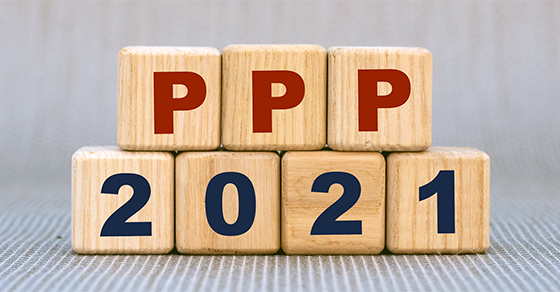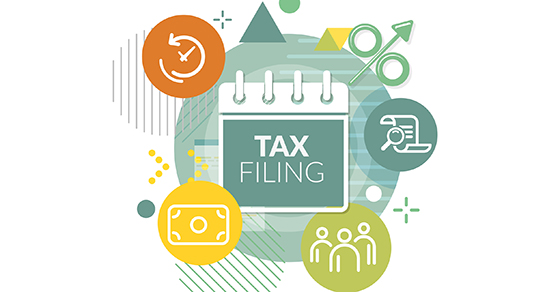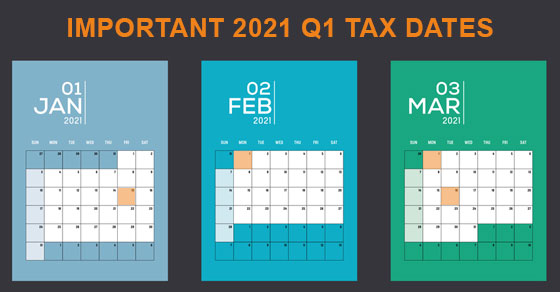Need another PPP loan for your small business? Here are the new rules
- ByPolk & Associates
- Jan, 07, 2021
- All News & Information, COVID-19 Resources
- Comments Off on Need another PPP loan for your small business? Here are the new rules
One item of interest for small business owners in the Consolidated Appropriations Act (CAA) is the availability of a second loan from the Paycheck Protection Program (PPP). The recently enacted CAA permits some small businesses who received a PPP loan to take out a “PPP Second Draw Loan” of up to $2 million. To qualify, you must employ no more than 300 employees per physical location, have used or will use the full amount of your first PPP loan, and demonstrate at least a 25% reduction in gross receipts during any quarter of 2020 (as compared with the same quarter in 2019). Additional rules apply. Contact us with any questions you might have about PPP loans.
New law doubles business meal deductions and makes favorable PPP loan changes
- ByPolk & Associates
- Jan, 07, 2021
- All News & Information, COVID-19 Resources
- Comments Off on New law doubles business meal deductions and makes favorable PPP loan changes
The COVID-19 relief bill, signed into law on December 27, 2020, contains numerous favorable tax breaks for businesses. For example, the new law includes a provision that removes the 50% limit on deducting business meals provided by restaurants and makes those meals 100% deductible. This rule applies to expenses paid or incurred in calendar years 2021 and 2022. The law also authorizes more money towards the Paycheck Protection Program (PPP) and extends it to March 31, 2021. In addition, it provides for the deductibility of PPP expenses paid with the loan proceeds. These are just a couple of the business-related provisions in the new law. Contact us if you have questions about your situation.
Your taxpayer filing status: You may be eligible to use more than one
- ByPolk & Associates
- Jan, 07, 2021
- All News & Information
- Comments Off on Your taxpayer filing status: You may be eligible to use more than one
For tax purposes, Dec. 31 is more than just New Year’s Eve. It will affect the filing status box that will be checked on your tax return. When filing a return, you do so with one of 5 tax filing statuses. The box checked on your return generally depends in part on whether you’re unmarried or married on Dec. 31. Here are the statuses: Single, married filing jointly, married filing separately, head of household and qualifying widow(er) with a dependent child. Head of household status can be more favorable than filing as a single person, but special rules apply. You must generally be unmarried, have a qualifying child (or dependent) and meet certain rules involving “maintaining a household.”
The right entity choice: Should you convert from a C to an S corporation?
- ByPolk & Associates
- Jan, 07, 2021
- All News & Information
- Comments Off on The right entity choice: Should you convert from a C to an S corporation?
The best choice of entity can affect your business in several ways, including the amount of your tax bill. Although S corporations can provide substantial tax advantages over C corporations in some cases, there are potential tax problems to assess before deciding to convert from C to S status. One issue to consider is last-in, first-out (LIFO) inventory. A C corporation that uses LIFO inventory must pay tax on the benefits it derived by using LIFO if it converts to an S corporation. Other issues to consider are the built-in gains tax, passive income tax and unused net operating losses. Contact us if you’re interested in an entity change. We’ll explain your options and the tax implications.
Prevent and detect insider cyberattacks
- ByPolk & Associates
- Jan, 07, 2021
- All News & Information
- Comments Off on Prevent and detect insider cyberattacks
Dishonest workers can initiate a cyberattack by stealing valuable information from your company’s computer network and using it for personal gain. They could be working for a competitor, seeking revenge for perceived wrongs or they may need money to pay gambling debts. You can prevent insider cybercrime by monitoring IT use, removing network access as soon as an employee is terminated and always treating workers fairly. And don’t neglect to protect physical assets such as paper records and computer hardware. Restricting your office’s Wi-Fi to those with special passwords is also a good idea. Contact us with questions.
The President’s action to defer payroll taxes: What does it mean for your business?
- ByPolk & Associates
- Jan, 07, 2021
- All News & Information
- Comments Off on The President’s action to defer payroll taxes: What does it mean for your business?
President Trump has signed a Presidential Memorandum to defer the employee portion of Social Security taxes for some people. The action only defers the taxes, which means they must be paid in the future. However, the action directs the U.S. Treasury Secretary to explore ways to eliminate the obligation to pay the taxes deferred. Employers have questions and concerns. For example, will employers have to withhold more taxes from employees’ paychecks in the future to pay the taxes back? Without a law to forgive the taxes, will employers be liable to pay them? What if employers can’t change their software by the Sept. 1 start of the deferral? Is the deferral required? Contact us with questions.
New COVID – 19 Relief Bill Now Signed into Law by the President
- ByPolk & Associates
- Dec, 29, 2020
- All News & Information, COVID-19 Resources
- Comments Off on New COVID – 19 Relief Bill Now Signed into Law by the President
Includes New PPP Funding for Previous PPP Recipients that Qualify New Simplified PPP Forgiveness Application for up to $150K Loans After much discussion regarding various elements of the bill (including the dollar amount of stimulus payments and various funding initiatives mainly in the omnibus spending portion of the bill) President Trump did eventually sign the […]
The Balanced Scorecard approach to strategic planning
- ByPolk & Associates
- Dec, 23, 2020
- All News & Information
- Comments Off on The Balanced Scorecard approach to strategic planning
In the early 1990s, the Balanced Scorecard approach to strategic planning was developed to enable business leaders to better organize and visualize their objectives. It segments a strategic plan into four critical areas: 1) Customers; how can you attract and retain customers that will build the bottom line? 2) Finances; how will leadership and employees drive your financial success? 3) Internal operations; in what business processes must you excel to maximize productivity, 4) Knowledge sharing and learning; how can you provide continuing education and preserve intellectual capital? Contact us for help identifying metrics and incorporating financial analysis into your strategic plan.
2021 Q1 tax calendar: Key deadlines for businesses and other employers
- ByPolk & Associates
- Dec, 23, 2020
- All News & Information
- Comments Off on 2021 Q1 tax calendar: Key deadlines for businesses and other employers
Here are a few key tax-related deadlines for businesses during Q1 of 2021. JAN. 15: Pay the final installment of 2020 estimated tax. FEB. 1: File 2020 Forms W-2 with the Social Security Administration and provide copies to employees. Also provide copies of 2020 Forms 1099-MISC to recipients and, if reporting nonemployee compensation in Box 7, file, too. MARCH 1: File 2020 Forms 1099-MISC if not required earlier and paper filing. MARCH 16: If a calendar-year partnership or S corp., file or extend your 2020 tax return. Contact us to learn more about filing requirements and ensure you’re meeting all applicable deadlines.
The next estimated tax deadline is January 15 if you have to make a payment
- ByPolk & Associates
- Dec, 23, 2020
- All News & Information
- Comments Off on The next estimated tax deadline is January 15 if you have to make a payment
LINKEDIN/FACEBOOK IMAGE POST (STAND-ALONE POST TO USE WITHOUT A LINK):
If you’re self-employed and don’t have paycheck withholding, you probably have to make estimated tax payments. These payments must be sent to the IRS on a quarterly basis. The 4th 2020 estimated tax payment deadline for individuals is Friday, Jan. 15. Even if you do have some withholding from paychecks or other payments, you may still have to make estimated payments if you receive income such as Social Security, prizes, rent, interest and dividends. Generally, taxpayers send four equal installments. But people who earn income unevenly during the year (for example, from a seasonal business) may be able to send smaller payments. Contact us if you have questions about the estimated tax rules.











You must be logged in to post a comment.